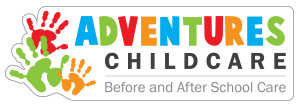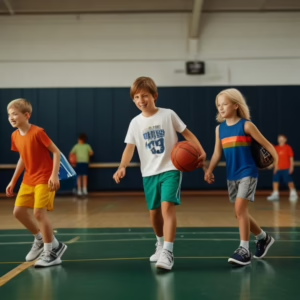Every child is unique, with their own learning style, interests, and pace of development. At Adventures Child Care, we believe that understanding each child’s individual needs is the foundation of high-quality early childhood education. One of the most powerful tools educators use to ensure each child receives the support and experiences they need is child observation.
Observation allows educators to gain insight into children’s strengths, challenges, and interests, enabling them to tailor learning experiences that foster curiosity, confidence, and a love for learning. Let’s explore how child observation plays a crucial role in personalizing education and promoting every child’s growth.
Why Child Observation Matters
Child observation is a structured yet natural way for educators to gather information about a child’s development. By carefully watching and documenting children’s interactions, behaviors, and progress, educators can:
✔️ Identify individual learning styles – Some children learn best through hands-on activities, while others thrive in structured, guided instruction.
✔️ Recognize developmental milestones – Observations help track physical, cognitive, social, and emotional growth.
✔️ Understand interests and strengths – Educators can tailor activities that align with what excites and motivates each child.
✔️ Support areas for improvement – Early identification of challenges allows for timely intervention and support.
✔️ Encourage meaningful learning experiences – By integrating what children enjoy into lessons, educators enhance engagement and participation.
Methods of Child Observation
Observation is not just about watching—it’s about gathering meaningful data that can be used to adapt learning experiences. Educators use various methods to observe children effectively:
- Anecdotal Records
Educators jot down short, descriptive notes about specific moments throughout the day. These informal observations capture real-life interactions, problem-solving moments, and key behaviors that give insight into a child’s development.
- Learning Stories
A more detailed and reflective approach, learning stories document a child’s journey through an activity or experience. These narratives highlight a child’s strengths, challenges, and growth over time.
- Checklists and Developmental Milestones
Educators use structured checklists to track developmental progress in areas such as fine motor skills, language acquisition, and social interactions.
- Photographs and Videos
Capturing moments through photos or videos allows educators and parents to see a child’s learning process in action, making it easier to discuss progress and areas for growth.
- Conversations and Interviews
Engaging children in conversations about their interests, feelings, and experiences helps educators understand their thought processes and social-emotional development.
Using Observations to Personalize Learning
Once educators gather observations, they use this information to adjust teaching methods, introduce new activities, and provide individualized support. Here’s how observation helps tailor learning:
- Adjusting Teaching Styles
Not every child learns the same way. Through observation, educators can determine:
✔️ Whether a child prefers hands-on learning or listening to instructions
✔️ If they work best alone or in a group setting
✔️ Their attention span and engagement levels in different activities
This allows teachers to modify how they present lessons, ensuring that each child is set up for success.
- Creating Interest-Based Activities
Observation helps educators identify what excites and motivates each child. If a child loves building with blocks, an educator may introduce STEM-focused challenges. If a child enjoys storytelling, they might be encouraged to create and act out their own tales.
By following a child’s interests, educators increase engagement and make learning fun and meaningful.
- Supporting Developmental Growth
Educators use observations to identify areas where children may need extra support. For example:
✔️ If a child struggles with fine motor skills, activities like cutting, drawing, and threading beads can be incorporated.
✔️ If a child has difficulty sharing or expressing emotions, group play and guided social interactions can help develop these skills.
✔️ If a child excels in language development, they can be encouraged to lead storytelling activities.
By recognizing strengths and challenges early, educators can intervene in a way that supports a child’s natural growth.
- Strengthening Social and Emotional Development
Observing how children interact with peers allows educators to:
✔️ Support positive social behaviors such as turn-taking and cooperation.
✔️ Help children develop empathy and conflict resolution skills.
✔️ Encourage self-confidence by recognizing achievements and strengths.
When educators understand a child’s social tendencies, they can create team activities that help build friendships and social skills.
Partnering with Parents Through Observation
At Adventures Child Care, we believe in open communication with parents. Observations don’t just stay in the classroom—they are shared with families to help create a consistent learning experience between home and school.
Here’s how we work with parents:
✔️ Regular Progress Updates – We keep parents informed through parent-teacher meetings, daily reports, and photos/videos.
✔️ Collaborative Goal-Setting – Educators and parents work together to identify areas of focus and set goals for the child’s development.
✔️ Encouraging Learning at Home – We provide suggestions on how parents can support their child’s interests and growth outside of school.
By working together, we create a seamless learning experience that helps children feel supported in all aspects of their development.
The Adventures Child Care Approach to Observation
At Adventures Child Care, we integrate observation into our play-based, child-led learning model. Our approach aligns with the FLIGHT Framework, emphasizing:
✔️ Child-led exploration – Allowing children to take ownership of their learning.
✔️ Inclusive learning spaces – Providing an environment where every child feels valued.
✔️ Flexible teaching methods – Adjusting strategies to meet each child’s unique needs.
Through daily observation and reflection, our educators ensure that every child has the opportunity to grow, learn, and succeed in a way that best suits them.
Final Thoughts
Child observation is more than just watching—it’s about understanding, adapting, and personalizing learning to help every child reach their full potential. Through structured observations, educators at Adventures Child Care create enriching, engaging, and meaningful experiences that support children’s academic, social, and emotional growth.
By fostering curiosity, identifying strengths, and addressing challenges early, we ensure that each child is set up for a lifetime of learning and success.
🌟 Want to learn more about how Adventures Child Care tailors learning to your child’s unique needs?
📞 Contact us at 403-483-1272
📧 Email us at rchooyin@adventureschildcare.ca
Join us in creating a brighter future—one observation at a time! 🎉


